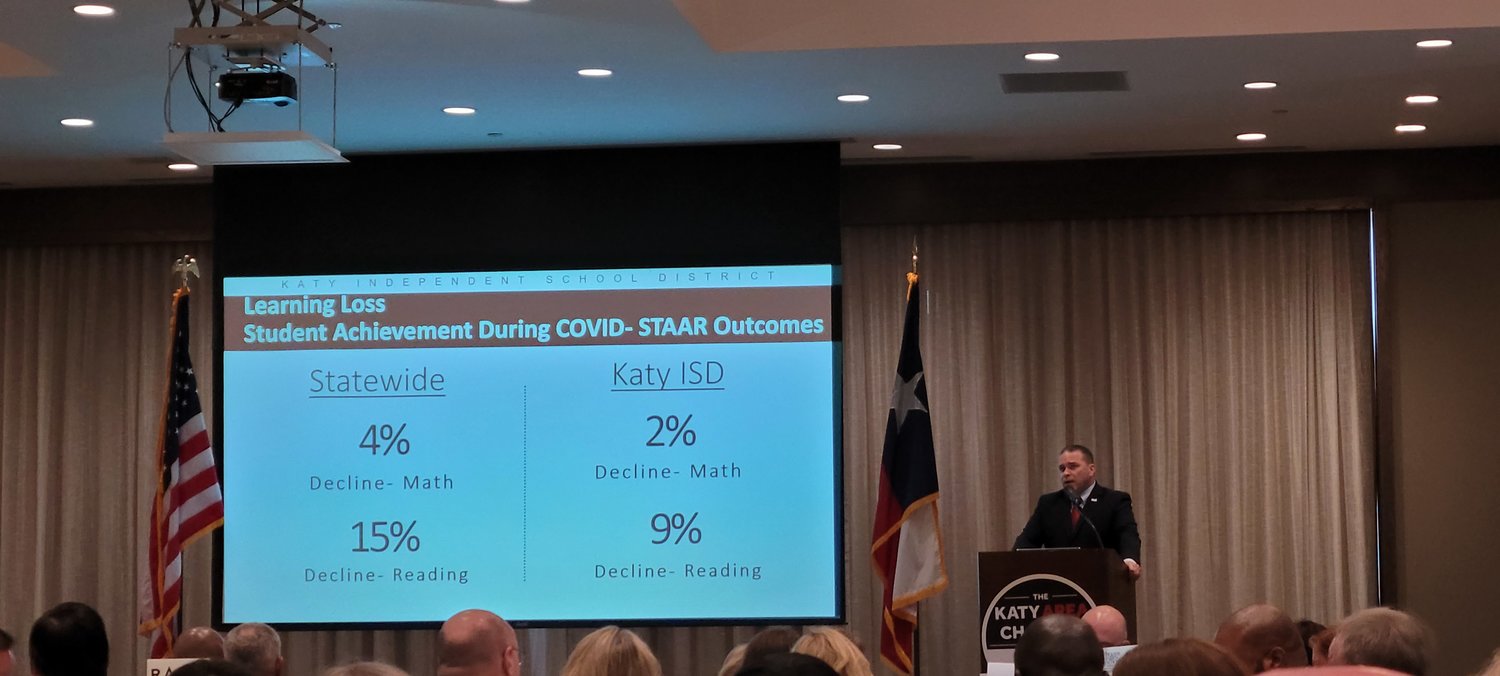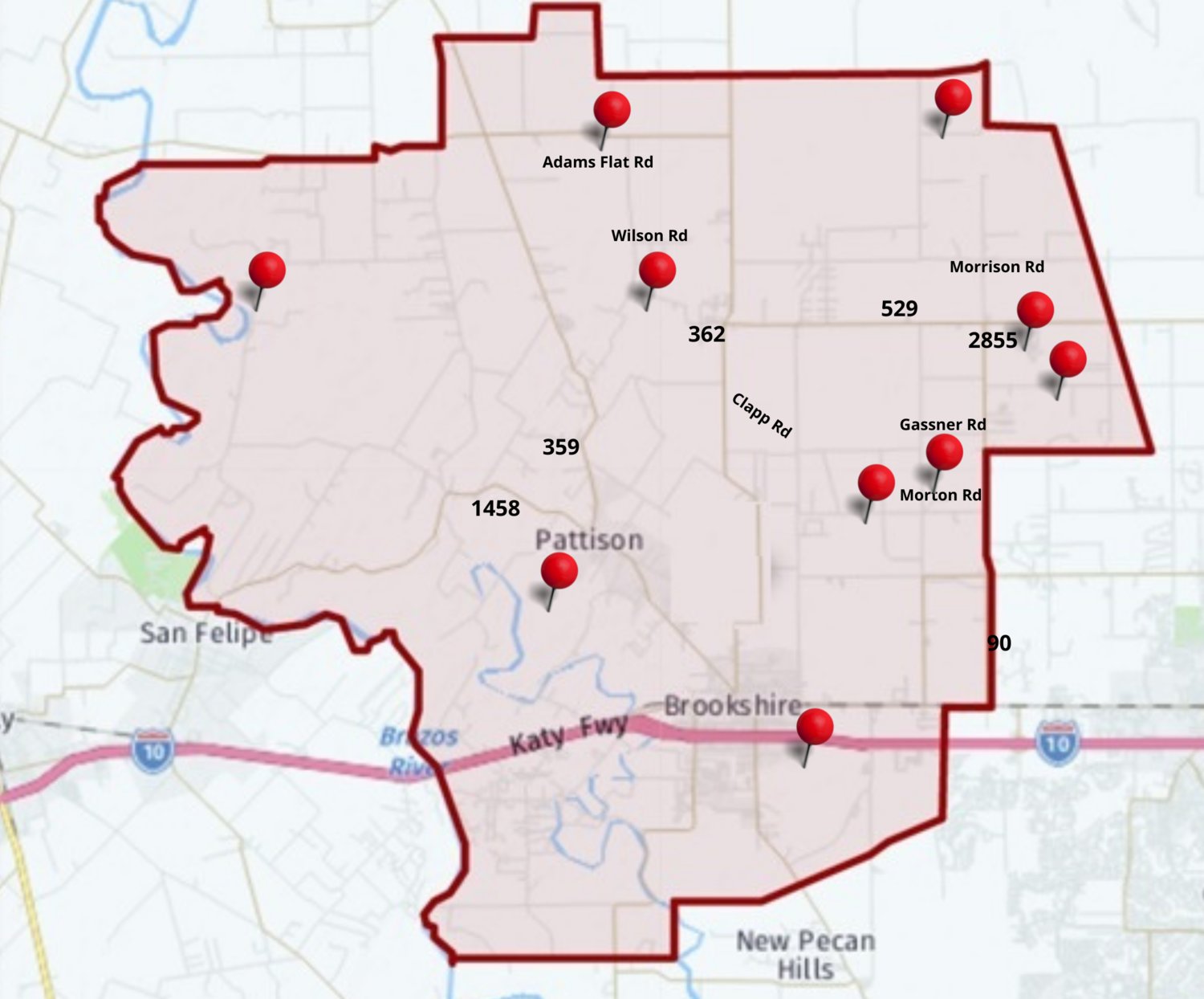Area superintendents provide updates on state of Katy area schools
In a joint forum organized by the Katy Area Chamber of Commerce, the superintendents of Katy, Royal and Lamar Consolidated ISDs discussed the current state of their districts. Generally, all three …
This item is available in full to subscribers.
Attention subscribers
To continue reading, you will need to either log in to your subscriber account, or purchase a new subscription.
If you are a current print subscriber, you can set up a free website account and connect your subscription to it by clicking here.
If you are a digital subscriber with an active, online-only subscription then you already have an account here. Just reset your password if you've not yet logged in to your account on this new site.
Otherwise, click here to view your options for subscribing.
Please log in to continue |
Area superintendents provide updates on state of Katy area schools
In a joint forum organized by the Katy Area Chamber of Commerce, the superintendents of Katy, Royal and Lamar Consolidated ISDs discussed the current state of their districts. Generally, all three said they were concerned about learning loss and other pandemic-related impacts on students.
“We speak life into them. We help them understand who they are, how valuable they are and what they can do in life,” said Lamar CISD Superintendent Roosevelt Nivens. “School is the conduit for that. We’re not just A-B-Cs and 1-2-3s.”
Nivens, KISD Superintendent Ken Gregorski and RISD Superintendent Rick Kershner all said that providing support to students during the pandemic while simultaneously dealing with staffing, rapid growth and managing funding were all challenges for them and their staff. They also expressed appreciation for community support as they look to fight learning loss and provide facilities that open doors for their respective student bodies.
Katy ISD
Gregorski said the last year and a half has been a challenge for KISD’s students, teachers and staff, with the challenges of the pandemic resulting in a 2% decline in math and 9% fall in the State of Texas Assessments of Academic Readiness – or STAAR – test scores. Compared to the state, he said, KISD performed better than the 4% and 15% respective drops in scoring though.
To address the challenges, KISD is utilizing Elementary and Secondary School Relief Funds – federal funding provide to help schools recover from the pandemic’s impacts, often referred to as ESSER funds. With that money, KISD is increasing the number of academic and behavioral intervention specialists, expanding tutoring, reducing class sizes in targeted areas that saw the most decline in performance, expanding summer school programs and focusing on professional development for faculty and staff.
Additional staff will also be needed as the district continues to grow, Gregorski said.
“We’re over 88,000 today and we keep on growing and growing rapidly,” Gregorski said.
Gregorski said the $79.3 million bond approved by voters last May will help accommodate new students as more learners come to the district. With 2,400 new students expected each year through 2029, the 2021 bond will support more than 300 projects throughout the district to improve capacity and learning spaces he said. Elementary No. 44 is already being built in the Cane Island subdivision and technology is being purchased to better support students. Additionally, three more elementary schools will be built along with both a new junior high and high school campus. Bond funding will also be used for safety and security upgrades and improvements to the district’s Northwest Transportation Center.
The district also has about 11,000 staff, Gregorski said. However, more staff are needed as the district grows. To attract and retain employees, he said the district has a strong focus on culture and is working with a firm called Satchel Pulse, a firm that monitors culture and climate in school districts and helps them identify areas of concern for teachers and staff that administrators can help with.
Renovations of older campuses and a natatorium are also planned as part of the bond package that was approved, according to KISD documents.
KISD has more than 150 job postings as of Sept. 21.
As the district meets the challenges facing it, Gregorski said it continues to maintain an overall good performance with an A rating from the Texas Education Agency, ranked as the second-best school district in Greater Houston, another A rating in the Financial Integrity Rating System of Texas, is on the AP Honor Roll for the tenth year issued by the College Board, is recognized as one of the best communities for music education by the National Association of Music Merchants and is the only school district on Forbes’ best employer list at No. 8.
Gregorski said the district will make it through the challenges it is facing and is heading in the right direction overall.
“Hopefully that direction is not COVID – anything but,” Gregorski said.
Royal ISD
RISD Superintendent agreed with Gregorski that COVID-19 presented unique challenges; however, he also said the district is facing challenges of incredibly rapid growth and staffing issues, though he feels blessed to be accompanied by a great staff and community as he works to move forward.
“I couldn’t be more blessed than to be at Royal ISD,” Kershner said.
Just since the start of the year though, RISD’s student population has gone from 2,390 students to 2,564 students as of Sept. 16, Kershner said. He added that the growth is a 12% increase from the district’s student population at the end of the 2020-21 school year.
Driving that growth, Kershner said, are more than 4,000 acres of new residential developments coming to RISD. Projects by Land Tejas and other developers are expected to bring thousands of new students from at least 10 new subdivisions coming to RISD, he said.
The challenge with that growth comes in maintaining the district’s track record as an institution, Kershner said.
“There’s a snapshot for the class of 2021,” Kershner said. “We had 118 scholarships with a value of $1,339,000, nine military enlistments from the class of 2021 in Army, Marines and National Guard.”
Kershner added that the district has 17 student organizations and award-winning academic and skills teams.
To deal with the growth and help ensure student success, the district is proposing a bond to improve both the quality and capacity of its facilities, Kershner said. While some funding has been used for projects like replacing the roof on the district’s STEM Academy facility, more is needed to bring the district up to the standard he wants set as its new superintendent – this is only Kershner’s second year in the role.
To that end, the district hosted a community advisory group to help them identify weaknesses in the district’s facilities and how to address capacity at district campuses to accommodate incoming students, Kershner said. To address the priorities set by that committee, the district opted to place a $99.5 million bond election on the Nov. 20 ballot this year, Kershner said.
If approved by voters, the bond funding would allow the district to create a new Pre-K to fifth grade elementary, a new junior high, renovations to the existing junior high which has been in service since 1967, and renovations to the Early Childhood Center, current elementary, STEM center and the district’s transportation facility which was built in 1984.
It is also a priority to take care of student’s, staff members’ and teachers’ emotional needs during the pandemic, Kershner said.
“We are focused on the (social and emotional learning) side,” Kershner said. “We named a social and emotional learning coordinator last year. Also known at this time, when we’re dealing with the pandemic, that this is a very crucial time to address the needs of our students’ social and emotional needs and our staff’s social and emotional needs.”
To that end, the district has programs in place to help students address the stresses for the last year by empathizing with them and providing them the support they need to succeed academically without emotional anchors, he said.
“If we don’t have human connections, our kids' struggle,” Kershner said.
Nivens, who strayed from his presentation to talk specifically about the struggles students are going through, agreed with both of his peers and said it is important for students to receive the support they need to continue to thrive despite COVID-19 or other challenges.
“My purpose is to make sure that every single young person under my leadership that I touch – that we help them reach their maximum potential, bottom line,” Nivens said.
Keywords
Katy ISD, Royal ISD, Lamar CISD, KISD, RISD, LCISD









